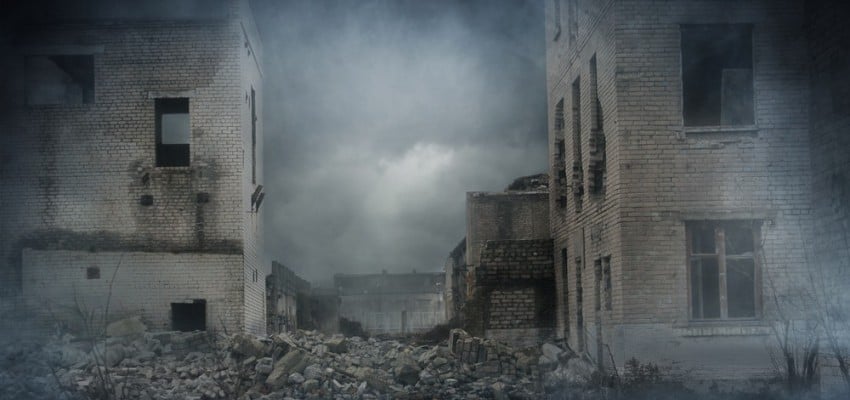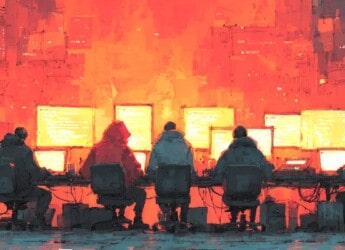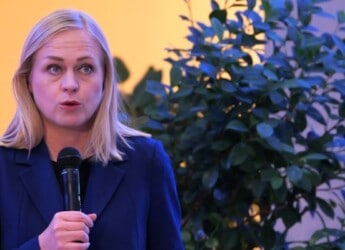|
|
Content Assessment: Urban Challenges? Ukraine Conflict Assessments in Maps (June 3 – June 7, 2022)
Information - 93%
Insight - 95%
Relevance - 92%
Objectivity - 93%
Authority - 96%
94%
Excellent
A short percentage-based assessment of the qualitative benefit of the post highlighting the recent Ukraine conflict assessments in maps from the Institute for the Study of War.
Editor’s Note: One of the most accurate and detailed sources for ongoing updates on the Ukraine crisis is the Ukraine Conflict Update from the Institute for the Study of War. The Institute for the Study of War (ISW) is a 501(c)(3) organization and produces strictly non-partisan, non-ideological, fact-based research. ISW seeks to promote an informed understanding of war and military affairs through comprehensive, independent, and accessible open-source research and analysis. ISW’s research is made available to the general public, military practitioners, policymakers, and media members. Providing a daily synthesis of key events related to the Russian aggression against Ukraine, ISW updates may benefit cybersecurity, information governance, and legal discovery professionals as they follow the business, information technology, and legal trends and trajectories impacted by and stemming from the current Ukraine conflict.
Assessment and Maps*
Ukraine Conflict Assessments – An Overview in Maps
- Institute for the Study of War (ISW), Russia Team
- Critical Threats Project (CTP), American Enterprise Institute
General Assessment Background Info
- ISW systematically publishes Russian campaign assessments that include maps highlighting the assessed control of terrain in Ukraine and main Russian maneuver axes.
- These maps augment daily synthetic products that cover key events related to renewed Russian aggression against Ukraine.
The Russian Offensive Campaign Assessments
- June 7, 2022
- By Kateryna Stepanenko, Karolina Hird, Mason Clark, and George Barros
Russian forces continued offensive operations in several locations in eastern Ukraine but did not secure any confirmed gains in ground assaults on June 7. Russian forces have likely captured most of Severodonetsk, but ISW cannot confirm the exact control of terrain within the city. Russian forces additionally redeployed troops east of Bakhmut to renew offensives to secure access to highways northeast of Bakhmut and threaten Ukrainian lines of communication. Russian troops north of Slovyansk will likely seek to advance toward Slovyansk and Kramatorsk from positions north of the city. Russian forces on the Southern Axis are reportedly redeploying away from Zaporizhia Oblast toward Kherson Oblast, likely in order to support Russian defensive positions that have been threatened by Ukrainian counterattacks along the Mykolaiv-Kherson Oblast border south of Davydiv Brid.
Members of the Russian military community are accusing Ukrainian forces of escalating artillery attacks on Russian rear areas in a likely attempt to dissuade further Western support to the Ukrainian military. Former FSB agent Igor Girkin (also known as Strelkov) accused Ukrainian troops of perpetrating “terrorist attacks” against residential areas of Donetsk City, Horlivka, and Makiivka. A Russian source additionally accused Ukrainian forces of firing on Shyroka Balka, Kherson Oblast. Ukrainian social media users denied the claims and stated that they are likely false-flag attempts to spoil Western opinion of the Ukrainian military and halt military aid to the Ukrainian Armed Forces.
The Kremlin’s efforts to censor information about deceased military personnel and ongoing forced mobilization within the DNR and LNR are reportedly exacerbating domestic tensions and opposition to the war in Russia. The Ukrainian Military Intelligence Directorate (GUR) reported that the Kremlin assigned lawyers and psychologists to convince families of personnel of the sunken cruiser Moskva to refrain from disclosing any information regarding the deaths of their relatives in an effort to crush rising social tensions in Russia. The GUR stated that the Kremlin is threatening to nullify financial compensation to the families of Moskva crew members if they publicly discuss the sinking of the cruiser, resulting in some relatives refusing to meet with Black Sesa Fleet commanders in Sevastopol in protest. Ukrainian media sources separately reported that the Donetsk People’s Republic (DNR) altered mobilization protocols and is now promising compensation for wounded and deceased personnel due to DNR servicemen rioting at the frontlines.
Domestic Russian complaints about the maltreatment and lack of preparation among Russian combat forces are likely prompting the Kremlin to take rhetorical steps to curb discontent. Russian Defense Minister Sergey Shoigu stated that new conscripts during the summer training period will be trained with specific attention to lessons learned so far in Ukraine during a meeting with the National Defense Management Center (NDCC) (the supreme command center of the Russian Armed Forces and Defense Ministry) on June 7. Shoigu added that summer conscripts will learn battlefield first aid, likely responding to criticisms by members of the Russian military community of poor tactics and lack of first aid acumen among Russian soldiers. However, the Russian military is unlikely to properly train and equip Russian conscripts rushed to the front as replacements and likely primarily seeks to mollify public discontent. Former DNR Security Minister and milblogger Alexander Khodakovsky claimed that he asked the DNR military command to move exhausted and demoralized proxy conscripts to auxiliary tasks away from the line of contact but to no avail.
Key Takeaways
- Russian forces have likely established control over the majority of the residential sector of Severodonetsk and conducted assaults against Ukrainian positions in the industrial zone in the past 24 hours. The operational environment within the city remains fluid.
- Russian forces continued efforts to advance on Slovyansk southeast from the Izyum area and west from Lyman, attempting to break through Ukrainian defenses that have halted most direct frontal assaults from Izyum.
- Russian forces are likely attempting to reinforce their operations in the Severodonetsk-Lysychansk area from both the Toshkivka-Ustynivka area in the south and Kupyansk from the northwest.
- Russian forces began withdrawing troops from positions in Zaporizhia Oblast, likely either to rotate damaged units into rear areas or to reinforce Russian defenses in northwestern Kherson Oblast, though ISW cannot currently confirm the destination of these forces.
- Russian forces failed to regain advanced positions on the western (now Ukrainian-occupied) bank of the Ihulets River on June 7.
- Russian Defense Minister Sergei Shoigu announced that Russian forces restored transit connections between newly occupied cities and Crimea.
- Russian occupation authorities continue to face challenges suppressing Ukrainian resistance and finding partisan supporters despite increasingly draconian occupation measures and attempts to bribe Ukrainian civilians.
- June 6, 2022
- By Karolina Hird, Mason Clark, and George Barros
The nature of urban combat in Severodonetsk is likely obfuscating reports of control of terrain within the city, though Russian forces likely retain control over much of the city. Head of the Luhansk Regional State Administration Serhiy Haidai claimed on June 5 that Ukrainian forces managed to retake large parts of Severodonetsk and push Russian forces to the outskirts of the city during successful urban counterattacks. Ukrainian journalist Yuri Butusov, however, denied Haidai’s claims on June 5 and claimed that Ukrainian forces only control the Azot industrial sector of Severodonetsk. Haidai amended his claims on June 6 and reported that the situation in Severodonetsk has deteriorated significantly, adding that Ukrainian forces were indeed fighting within the Azot industrial site on June 6. The reason for Haidai and Butusov’s conflicting reports is unclear, and heavy urban fighting is ongoing in the city.
Ukrainian naval forces are challenging Russian dominance over the northwestern part of the Black Sea and claimed to be preventing Russian warships from operating close to the shoreline. The Ukrainian Navy reported on June 6 that they had succeeded in pushing a grouping of the Russian Black Sea Fleet more than 100 km away from the Ukrainian coast but did not specify a timeframe for this statement. The report additionally stated that Russian naval forces have subsequently had to change their tactics in the Black Sea and are relying more heavily on Bal and Bastion coastal defense systems in occupied Kherson and Crimea rather than seaborne air defenses. The UK Ministry of Defense claimed that Russian forces have been strengthening their air defense assets on Snake Island, and the Ukrainian Ministry of Defense reported that Russian forces deployed additional S-300 air defense battalions to Crimea. Taken together, these reports suggest that Ukrainian naval pressure and anti-ship missiles—likely including those provided by the UK and other states—have forced the Russian grouping in the northwestern Black Sea to rely more on coastal and air defense as they are pushed away from the Ukrainian shoreline. Ukraine will likely attempt to leverage these successes to alleviate the economic pressure of the Russian blockade on Ukraine’s ports and seek additional economic support from the west, including possibly opening up new routes for international aid to Ukraine.
Key Takeaways
- Russian forces likely retain control over most of Severodonetsk as of June 6, though the exact situation in the city remains unclear. Control of terrain is likely changing hands frequently.
- Russian forces in the Izyum area did not make any confirmed advances, while forces advancing west from Lyman secured minor gains.
- Russian forces continued unsuccessful attempts to sever Ukrainian lines of communication northeast of Bakhmut.
- Limited and localized Ukrainian counterattacks on June 5 forced Russian troops to focus on holding defensive lines north of Kharkiv City on June 6.
- Russian occupation authorities are advancing efforts to issue Russian passports to Ukrainian citizens and cement their control over occupied territories.
- The Ukrainian Navy claimed to have pushed the Russian Black Sea Fleet more than 100 km from the Ukrainian coast, likely to reduce the pressure of the Russian blockade on Ukraine’s southern ports.
- June 5, 2022
- By Karolina Hird, Mason Clark, and George Barros
Ukrainian forces continued to conduct limited and localized but successful counterattacks against Russian positions throughout Ukraine on June 5, including retaking large areas of Severodonetsk—the city in Luhansk Oblast the Kremlin has concentrated the majority of its forces on capturing. A Russian Telegram channel claimed that Ukrainian troops launched a counterattack north of Kharkiv City, indicating that Ukrainian forces continue to pressure Russian defensive lines near the Russian border. Ukrainian forces are likely seeking to leverage the continued Russian focus on Severodonetsk to conduct counterattacks on other axes of advance. Even as Russian forces continue to pour equipment and troops into the Severodonetsk-Lysychansk area, Ukrainian forces have conducted a successful counterattack in Severodonetsk in the last 48 hours and pushed Russian troops back to the eastern outskirts of the city and out of southern settlements. Ukrainian counteroffensive pressure will likely continue to draw the attention of Russian forces to Luhansk Oblast and therefore leave vulnerabilities in Russian defensive efforts in Kharkiv Oblast and along the Southern Axis. The ability of Ukrainian forces to successfully counterattack in Severodonetsk, the Kremlin’s current priority area of operations, further indicates the declining combat power of Russian forces in Ukraine.
Ukrainian forces reportedly killed Russian Major General Roman Kutuzov on June 5. Russian Telegram channels reported that Kutuzov was killed near Mykolaivka, Luhansk Oblast (near Popasna) on June 5. Kutuzov likely commanded the Donetsk People’s Republic’s 1st Army Corps at the time of his death, though ISW cannot confirm his exact position. Some sources reported that Kutuzov commanded the 5th Combined Arms Army (CAA) at the time of his death, but we assess this is likely incorrect—Kutuzov served as acting commander of the 5th CAA from 2017 to 2019, and Major General Alexei Vladimirovich Podilov currently commands the 5th CAA. High-level Russian commanders have taken remarkably high losses during combat in Ukraine, and will likely continue to do so as the Russian command continues to deploy military leadership directly to the frontline. Kutuzov’s death has not yet been confirmed but would be at least the seventh death of a general in Ukraine since the beginning of the war.
Russian forces conducted their first missile strike against Kyiv in over a month on June 5. Advisor to the Ukrainian Ministry of Defense Vadym Denysenko stated that Russian forces fired five X-22 cruise missiles from a Tu-95 aircraft at Kyiv from the direction of the Caspian Sea that hit the Darnytsia Rail Car Repair Plant on the outskirts of Kyiv. The Russian Ministry of Defense claimed that this strike targeted T-72 tanks supplied to Ukraine by other Eastern European countries, but images of the target area confirm that the missiles hit the Darnytsia plant. It is unclear if Russian forces intended to strike foreign-provided Ukrainian tanks and missed, or if the Kremlin is attempting to obfuscate its intended target. This attack on Kyiv likely indicates that Russian forces are continuing to target Ukrainian infrastructure in non-critical areas of Ukraine in order to disrupt Ukrainian logistics as Russian forces take considerable losses in Donbas.
Russian military bloggers continued to reckon with overarching struggles in Russian force generation on June 5. Russian milblogger Alexander Khodakovsky accused “screamers in the guise of patriots” of hypocritically calling for general mobilization while at the same time discrediting the Russian military leadership and driving away those who would voluntarily take up arms for Russia. Khodakovsky blamed the pervasive public discourse on general mobilization for making people overthink and subsequently become less willing to enter military service, thereby forcing Russian military command closer to actually needing to announce general mobilization. Khodakovsky suggested that this discourse is setting Russia up for a long war in Ukraine and that Russian authorities have been positioned to take the blame for losses. Russian war journalist Alexander Sladkov claimed that the Russian grouping in Ukraine is an ”exclusively professional army” not staffed by conscripts, while simultaneously calling for the removal of health requirements for rear and combat specialties in order to mobilize those who should be medically disqualified. These and other comments by Russian military specialists indicate the Russian military community is increasingly aware of issues in sustaining mobilization efforts and different actors are seeking to apportion blame as Russian operations continue to stall.
Key Takeaways
- Ukrainian counterattacks in Severodonetsk recaptured large parts of the city and forced Russian troops out of the southern suburbs of the city.
- Russian forces continued efforts to converge on Slovyansk from the southeast of Izyum and west of Lyman but remain unlikely to make notable advances around Slovyansk due to their continued prioritization of Severodonetsk.
- Ukrainian troops reportedly conducted limited and localized counterattacks north of Kharkiv City.
- Russian forces continued to hold their defensive lines and fire at Ukrainian positions along the Southern Axis.
- Ukrainian forces likely killed Russian Major General Roman Kutuzov near Popasna.
- June 4, 2022
- Kateryna Stepanenko, Mason Clark, and George Barros
Ukrainian forces are successfully slowing down Russian operations to encircle Ukrainian positions in Luhansk Oblast as well as Russian frontal assaults in Severodonetsk through prudent and effective local counterattacks in Severodonetsk and their defense of the western Siverskyi Donets riverbank. Ukrainian officials reported on June 3 that Ukrainian defenders pushed back against Russian advances in Severodonetsk and are actively hindering Russian advances on Lysychansk from the southwest. Luhansk Oblast Administration Head Serhiy Haidai disagreed with the UK Defense Ministry forecast on June 3 that Russian forces will seize the remaining 10% of the oblast in the next two weeks, claiming that Ukrainian forces have enough reinforcements and equipment to conduct further counterattacks and defend their positions. Haidai noted that Russian forces wrongfully believe in their own successes, enabling Ukrainian defenders to inflict high losses against unsuspecting Chechen units. Pro-Russian milblogger Voenkor Kotyenok Z claimed that Russian forces are unlikely to break through Ukrainian defenses in Lysychansk from Severodonetsk (through continued frontal assaults and an opposed crossing of the Siverskyi Donetsk River) and will likely need to complete the drive from Popasna if they hope to capture Lysychansk. Voenkor Kotyenok Z claimed that Ukrainian forces could prevent Russian river crossings from Severodonetsk and highlighted that Russian forces have not yet secured access to two key highways to Lysychansk.
The Ukrainian government and military are furthermore discussing the battle of Severodonetsk in increasingly confident terms and are likely successfully blunting the Russian military’s major commitment of reserves to the grinding battle for the city. While Russian forces may still be able to capture Severodonetsk and Lysychansk and Ukrainian forces are likely more degraded than Haidai’s statements imply, Ukrainian defenses remain strong in this pivotal theater. The Russian military has concentrated all of its available resources on this single battle to make only modest gains. The Ukrainian military contrarily retains the flexibility and confidence to not only conduct localized counterattacks elsewhere in Ukraine (such as north of Kherson) but conduct effective counterattacks into the teeth of Russian assaults in Severodonetsk that reportedly retook 20% of the city in the last 24 hours. The Ukrainian government’s confidence in directly stating its forces can hold Severodonetsk for more than two weeks and willingness to conduct local counterattacks, rather than strictly remaining on the defensive, is a marked shift from Ukrainian statements as recently as May 28 that Ukrainian forces might withdraw from Severodonetsk to avoid encirclement.
Kremlin Spokesperson Dmitry Peskov reiterated on June 3 that Russia will continue its “special military operation” in Ukraine until Russia achieves all of its objectives. Peskov noted that Russia has already “liberated” many settlements since the start of the operation. Kremlin officials have begun steadily returning to their original claims about the successes of the Russian invasion of Ukraine in contrast to previous statements in late May explaining the slow pace of the war. Russian Defense Minister Sergey Shoigu also claimed on June 3 that Russian forces are adopting new unspecified tasks to accelerate the progress of the war. The Kremlin is likely setting conditions to announce some sort of victory in eastern Ukraine while preparing for a protracted war. The Kremlin has not abandoned its maximalist political goals for Ukraine even though it has been forced to revise downward its immediate military objectives.
Key Takeaways
- Ukrainian forces conducted successful local counterattacks in Severodonetsk and Russian progress in direct assaults on the city and wider operations to encircle it remain slow. Ukrainian defenses in eastern Ukraine remain effective.
- Russian forces launched a series of unsuccessful offensive operations southwest of Izyum and in the Lyman area.
- Russian forces continued to defend previously occupied positions around Kharkiv City and launched missile and artillery strikes against Ukrainian defenders.
- Russian forces did not attempt to launch assaults on settlements in Kherson and Zaporizhia Oblast but continued to fire at Ukrainian positions throughout southern Ukraine.
- The Kremlin faces rising partisan activity in southern Ukraine despite Russian efforts to restrict movement and telecommunications access.
- Ukrainian officials are continuing negotiations for a prisoner exchange of the captured Mariupol defenders.
- June 3, 2022
- By Kateryna Stepanenko, Mason Clark, and George Barros
Russian Defense Minister Sergey Shoigu claimed that Russian forces will “accelerate” the “special military operation” in Ukraine in a meeting with Chechen Leader Ramzan Kadyrov on June 3, though Russian forces are unlikely to be able to do so. Kadyrov said that Shoigu has “identified new tasks” that will improve the effectiveness of Russian offensive maneuvers and improve Russian tactics. Kadyrov did not specify which tasks Russian forces will undertake to speed up their pace. Shoigu previously claimed on May 24 that Russian forces were making slow progress in eastern Ukraine to avoid civilian casualties. In a retrospective on the 100th day of the war, the UK Defense Ministry stated that Russian forces will likely establish control over Luhansk Oblast in the next two weeks, though only at significant further cost. The UK Defense Ministry further noted that Russian forces on all other axes have gone over to defensive operations to concentrate all available forces in Severodonetsk, and stated Russia will need to commit sizable investment of manpower and equipment—that it will be unable to generate quickly, if at all—to advance beyond Luhansk Oblast.
A Russian milblogger published a lengthy message on June 3 claiming that nearly the entire 35th Combined Arms Army has been destroyed in Izyum due to incompetent Russian commanders. A Russian milblogger under the pseudonym Boytsovyi Kot Murz said that Russian commanders did not account for combat challenges in the Izyum woods, leading to significant losses in the 64th and 38th Separate Guard Motor Rifle Brigades, which he reported now have less than 100 servicemen in total. Boytsovyi Kot Murz claimed that Russian commanders failed to provide necessary equipment to units fighting in wooded terrain and did not repair Russian heavy artillery in a timely manner. Russian forces also reportedly lacked effective communication with command centers and relied on messengers due to the shortage of encrypted phones. Boytsovyi Kot Murz noted that the lack of communications between Russian units and commanders allowed Ukrainian forces to strike Russian advanced positions with drones. Russian private military company servicemen from Wagner also refused to participate in combat, leading to a significant lack of advances on the Izyum axis. While ISW cannot independently confirm these reports, they are consistent with previous reports of Russian operations and high casualties on the Izyum axis.
Russian and proxy forces reportedly have not sufficiently prepared frontline units with medical supplies, leading to abysmal medical care. Boytsovyi Kot Murz criticized the Russian Defense Ministry for failing to prepare medical equipment and field hospitals for wounded servicemen. Russian commanders reportedly failed to learn lessons from the lack of medical equipment during the Battle of Debaltseve in 2015 and are repeating similar mistakes. Boytsovyi Kot Murz claimed that Russian forces do not provide frontline troops with high pressure bandages and other supplies necessary to address limb injuries in time. Boytsovyi Kot Murz compared expired and underprepared Russian first aid kits to higher quality Ukrainian supplies and claimed that Russian forces do not have volunteer support that could address the shortages in military equipment. Boytsovyi Kot Murz noted that only Russian infantry, that he claimed has been defeated, had necessary medical training—while newly recruited reservists are incapable of providing first aid. Boytsovyi Kot Murz said that Russian medics are conducting an unnecessary number of limb amputations due to the lack medical equipment provided by the Russian Defense Ministry. These claims are consistent with past reports of poor Russian medical care in frontline units, and these conditions are likely a major contributing factor to Russian demoralization and the growing refusal of servicemen to return to frontline units.
Ukrainian forces report that Russian electronic warfare (EW) units are increasingly threatening Ukrainian air reconnaissance in eastern Ukraine. Ukrainian military officials reported that Russian forces are increasingly jamming all possible signals and hindering Ukrainian drone operations. The Ukrainian General Staff has previously reported that Russian forces intensified EW operations in Donbas, likely in an effort to obstruct Ukrainian aerial reconnaissance and drone strikes on Russian units.
Key Takeaways
- Russian forces conducted unsuccessful assaults southeast and southwest of Izyum and west of Lyman but remain unlikely to secure major advances towards Slovyansk.
- Russian forces made minor gains in the eastern part of Severodonetsk, but Ukrainian forces continues to launch localized counterattacks in Severodonetsk and its outskirts.
- Russian forces did not attempt to launch assaults on Avdiivka.
- Russian forces failed to regain lost positions in northeastern Kherson Oblast and continued to defend previously occupied positions.
- Russian occupation authorities began issuing Russian passports in Kherson City and Melitopol, though they continue to face challenges establishing societal control over occupied territories and ending Ukrainian partisan actions.
We do not report in detail on Russian war crimes because those activities are well-covered in Western media and do not directly affect the military operations we are assessing and forecasting. We will continue to evaluate and report on the effects of these criminal activities on the Ukrainian military and population and specifically on combat in Ukrainian urban areas. We utterly condemn these Russian violations of the laws of armed conflict, Geneva Conventions, and humanity even though we do not describe them in these reports.
Chronology of Maps from June 3-7 2022 – Mouseover to Scroll
Ukraine Conflict Maps - 060322-060722See the Institute for the Study of War Interactive Map of the Russian Invasion
Read the latest Ukraine Conflict updates from the Institute for the Study of War
* Shared with direct express permission from the Institute for the Study of War (ISW).
About the Institute for the Study of War Research Methodology
ISW’s research methodology relies on both primary and secondary sources, enabling researchers to develop a comprehensive understanding of the situation on the ground. In order to analyze military and political developments in any given area, ISW’s research analysts must wholly understand the systems of enemy and friendly forces. They must also understand the population demographics, physical terrain, politics, and history of that area. This lays the analytical foundation for understanding the reasons for particular developments and fulfilling their assigned research objectives. ISW analysts also spend time in places like Iraq, Afghanistan, and elsewhere in order to gain a better understanding of the security and political situation and to evaluate the implementation of current strategies and policies. Our researchers compile data and analyze trends, producing a granular analysis of developments in areas of research, producing an accurate, high-resolution, timely, and thorough picture of the situation. ISW’s research methodology guarantees its success and commitment to improving the nation’s ability to execute military operations, achieve strategic objectives, and respond to emerging problems that may require the use of American military power.
About the Institute for the Study of War
The Institute for the Study of War advances an informed understanding of military affairs through reliable research, trusted analysis, and innovative education. We are committed to improving the nation’s ability to execute military operations and respond to emerging threats in order to achieve U.S. strategic objectives. ISW is a non-partisan, non-profit, public policy research organization.
Learn more, get involved, and contribute today.
Additional Reading
- [Annual Update] International Cyber Law in Practice: Interactive Toolkit
- Data Embassies: Sovereignty, Security, and Continuity for Nation-States
Source: ComplexDiscovery



























